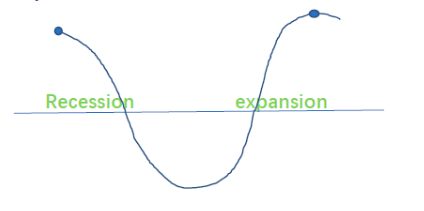
虽然说今年的AP考试分为线上和线下的形式,但是对于同学们来讲,考试内容是完整的,因此同学们还是需要好好的复习。下面给大家讲几个AP宏观经济常考考点,一起来看看吧!
Consumer price index (消费者价格指数): measures changes in the price level of a market basket of consumer goods and services purchased by households.
(Overestimate the true burden of inflation because it does not recognize consumers’ ability to substitute goods and services as price change. (选择题考过))
Producer price index(生产者价格指数):the average changes in prices received by domestic producers for their output.
RGDP> NGDP: Deflation
RGDP<NGDP: Inflation

More resources
Higher level of education
Increase technology/productivity
Education/Training
Better skills
Disposable income=personal income-tax
autonomous consumption: consumption expenditure that occurs when income levels are zero.
derived consumption:Consumption for a factor of production or intermediate good occurs as a result of the consumption for another intermediate or final good.
1. Monetarist(很少考):increasing the money supply at a rate equal to the GDP increase rate.
2. Classical(比较常考,答题也有出,关键词:Government take no actions): emphasize economy is fairly stable(强调市场内在稳定),can cure the recession; and no government intervention(没有政府介入); Flexible market.
3. Keynesians(常考): emphasize that economy is unstable. (Sticky market); Recommand active government policy. (fiscal policy is more effective than monetary policy); Liquidity trap
When economy is in a Recession, there is a surplus of workers or inputs, the wage and the cost will decrease
AS curve will shift to the right for get equilibrium level. (没有政府介入,市场自动恢复)
Crowding out effect:通常指政府的开支增加导致的私人投资和消费减少。
通常思路是:GS(government spending)increase Demand for loanable fund increase real interest rate increase people tend to save money in the banks rather than use it to invest, so that investment and consumption decrease, AD shift to left.反之亦然。
Stagflation:跟理性预期很像。
逻辑是:When AD curve shift to right, price level increase
people are expecting a higher price level
so producers tend to save products rather than sell it since they are waiting for a higher price level which can make more profit for them.

1. 计算方法:失业人口/总劳动力
失业人口指:
1.People have ability to work but do not have job.
2.People who is finding new job.
不是失业人口的情况:Tony在一个志愿者中心无薪工作,期间拒绝一切工作的,这种情况Tony不能算是劳动力。
2. FOUR kinds of unemployment;
1. Frictional unemployment:摩擦性失业,A person switches to a new job.可以理解为跳槽期间的空档时间。
2. Structural unemployment:结构性失业, A kind of skill is being replaced by machines, therefore there is no requirement for this kind of skill-worker anymore. (技术不再被市场需求)
3. Cyclical unemployment:周期性事业, A person was being unemployed since the economic change, such as recession or depression.
4. Seasonal unemployment:季节性失业,A person was unemployed since the seasonal change.
3. Dishonest workers: 不是失业人口却拿补助金的人。会导致unemployment rate 上升。
4. Natural unemployment rate:around 5%, only in structural unemployment and frictional unemployment.
5. Discourage workers: People who do not want to find job, and will not account for labor force.
有关ALEVEL宏观经济的完整概念梳理就到这里,可以不用来回翻教科书啦。不过复习光有概念还不行,因为考试局的考纲变化非常频繁,很可能会出现考纲、考法和教科书内容出现不匹配的情况。如果你还不知道如何根据新考纲变化调整复习策略,点击预约试听【唯寻ALEVEL同步培训班】

Alevel宏观经济Terms of trade考点讲解 考A*的锦囊妙计在这里
Alevel经济学复习技巧有哪些?从复习考纲到考试的答题点都在这了
查看。

学习有方法,成长看得见
筑梦牛剑/G5/常春藤
